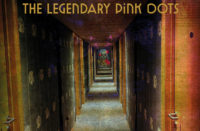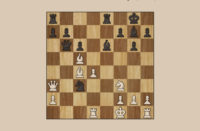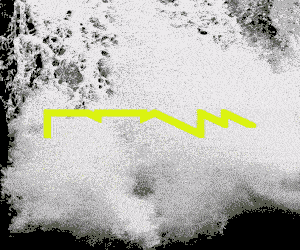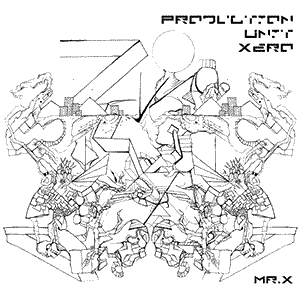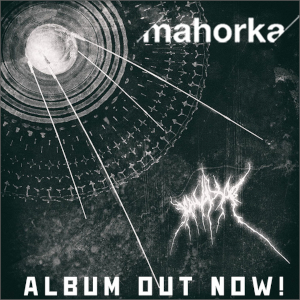
(09.01.07) This is the second in this new monthly review series by TJ
Norris. The focus is fixed on charged international releases that play
on audio/visual elements and experiments within the hybrid of multi
genres. Like particles in space, or ions, this type of charge can
unknowingly produce both positive and negative conductivity. Norris is
also continuing to curate a somewhat related a/v performance series,
soundbytes, in his native Portland, Oregon. In the past he has hosted
diverse acts as Twine, Illusion of Safety, Richard Francis and
vidnaObmana. If you are passing through please contact him
for more
information, or read his
regular blog (or Myspace) to get the double-dipped
flavor of the month.
::..:::…..:..::….:::::..:::..:::::::……:::…::.:::….::::..:..:::…::…….::::
El Camino Real is William Basinki’s rebirth of ambient cool. Keeping
true to his growing discography of sensitively deconstructed sound
work, this was recorded from his signature tape loops in 2006. It’s as
if I were sitting upon the tarmac at LAX at dawn, watching the 747s
take flight, one by one, in slow motion. The hazy thick drone is
delivered en masse filling the ground with passing clouds of dusty
distortion, rolling as if you could almost touch its edges. The single
50-minute track rumbles in the eye of this low-fi sound storm, never
losing the bounty of its curvy, harmonious structure. In its
insistent, repetitive continuance Basinski retrofits the listener at
dawn, within a certain silence where few have survived the fallout of
an imaginary apocalypse. It’s fiery, yet desolate.
::..:::…..:..::….:::::..:::..:::::::……:::…::.:::….::::..:..:::…::…….::::
The new disc by Novi_sad (Thanasis Kaproulias) on Greek label Tilt
Recordings is a categorically astonishing debut. From the start, this
nearly hour-long triptych of pieces is a multi-layered, expertly
edited collage of dramatic fluid and crunchy textures. In this light,
becoming a transcendent departure from your sense of space.
“Everything Looks Better Beside Water,” indeed. And if you simply
close your eyes while playing this you may envision haunting streams
of consciousness on the edge of clinical abduction. At times the low
end delivers indelible hypnotic vibrations, searing metallics and a
steady sense of the percussion of presence in the distance. The almost
inaudible high pitched sine waves of “O you sweet and spontaneous
Earth. You answered them only with spring” shift the velocity some.
That is until about four minutes in when a siege of encrusted razor
tones builds to a drone that obliterates most anything in its path.
It’s noisy, yet resilient, and Kaproulias smartly knows when enough is
enough, and as such mediates his own table of elements.
::..:::…..:..::….:::::..:::..:::::::……:::…::.:::….::::..:..:::…::…….::::
This is the first full-length by the Montreal duo Minibloc (Nicolas
Dion and Anne-Francoise Jacques). It runs the gamut from risky rough
micro-noise on “Examen: Monsieur Déboule L’escalier Jaune Longtemps”
to the shyly sparse feedback and roll-back-the-tape play of “Bingo
Crounch.” One thing’s for sure, these two are nothing if not
completely adventurously inventive. They sound as if they are on the
underside of their instruments on the quirky THX 1138 inspired
“Bourgeois Poison Ivy.” Very physical and raw, without any real
melody, Minibloc has concocted what sounds at times grating like an
overly anxious dog pawing at an open mic. When I saw them play live at
the Mutek Festival in ’05 I actually called them “cute” and this makes
me want to eat those words. Sure their name is Minibloc and the
players are each under 5’8″ – but the whole book/cover conundrum plays
hardball right back at you here. Sawing wood, jangling keys, twisting
and tightening gadgets – their playful experimentation continues
throughout. This is not at all music that you can dance to, more like
the sounds of a fix-it chop shop do-it-all repair center – especially
as heard on the muscularly breathing “Pink Duvet.” There’s ample
amplitude, and a sudden, almost naïvely curious sensibility.
::..:::…..:..::….:::::..:::..:::::::……:::…::.:::….::::..:..:::…::…….::::
These thirty-one imaginary soundtracks combined in a deluxe two-pack
are based on the films of Yasujiro Ozu. A very diverse international
compilation that includes work by John Hudak, Roel Meelkop,
Steinbruchel, Steve Roden, Taku Sugimoto, Marc Behrens and many
others. They’ve each created their own visual/visceral sound
experience for the listener to explore with conceptually dramatic
sequencing throughout. In a combination of field recordings, samples
and electronic experimentation, most of what is contained herein is a
wash of drone and ambience – especially noted in the beautiful
three-minute piece “Ukigusa” by Alejandra & Aeron.
Doors creak in
syncopation, a stream flows quick and softly, with a light roar from
the mysterious outdoors. On Behrens’ “Samma No Aji” there’s a dramatic
shift between understanding the listening experience as sine waves or
the nature of crickets. The tone is sharp and postured like stalking
prey, while incidental chirping distracts the potential of the
situation. The work is dramatically dense and ordered, and not
necessarily through common sense, but the shared experience, the
happenstance of aural cinema perhaps. As you listen, read deeply into
the well-written liner notes from Masters of Cinema’s Doug Cummings,
who truly gives a quick, yet rounded historical interpretation of
Ozu’s film work and how it can possibly endure through recordings such
as this. The shaking feedback in Asuna’s short “From Scene 99 To The
End – Kohayagawa-Ke No Aki” alludes to the never-ending buzz of the
fixed machine age. It changes the continuum of energy here, but is
much needed grounding.
Kiyoshi Mizutani presents two pieces titled two
tables (1 and 2) where field recordings of domestic scene, watching
television in the kitchen are layered with exotic birds and the hiss
of a light rain. Part 1 sounds like the bass roar of a waterfall
combined with the delicate gathering of well water, or bathing. There
are voices and knocking (industrial or ‘peckers?). Rustling through
woods can be heard over a fine din of more rapturous rain, along with
vehicles whizzing by and a few cawing birds. It’s all quite noir,
really. “Tooi Soba” is Sawako’s unusual free-form ambient noise
contribution. Sauntering in slippers, perhaps prepping breakfast with
the clink of teacups, it’s definitely morning. There’s a frustrated
bit of pacing, and a few sparse words as familiar birds call. This is
the morning after (what though)? Dale Lloyd contributes one of the
few truly melodic pieces here called “Return To Me Who Sleeps” which
closes the set. Strumming on strings, with the echo of a gong-like
instrument, there’s a distinctly Japanese quality to the timing of his
playing as it fades softly.
::..:::…..:..::….:::::..:::..:::::::……:::…::.:::….::::..:..:::…::…….::::
The Tokyo duo of Saya and Takashi Ueno has released a record of range
from the delicate harmonies of the jazzy shoegazer “Cacoy” that turns
discordant towards the very end to the mysterious crooner “Rasen”
which plays on Bjork’s lonesome sweetness amidst the vibration of
organ drone. Totemo Aimasho makes several attempts to toy at
something pop, but never really goes there intentionally. The weary
“Jitsurei” is a good example of a languid soundtrack at half-speed. Of
the dozen tracks on the disc, three are under one minute, including
the would-be just-revving anthem “Midori,” the 44-second piano recital
opener “Hakka” and the micro-hiss and textural elements of “Broome”
that are more like a throat singing version of a chugging freight
train passing through. These are situational pauses, like haikus, that
balance the drama of the other stories like “Donna Donna” (sung like a
Japanese oompa loompa ditty, with a hint of Nick Cave). Though phrased
in quite a contemporary manner, parts here sound like one of those
lost folk records that slipped between the cracks decades ago, atop a
cracked rhythm box, both bright and mellow.
::..:::…..:..::….:::::..:::..:::::::……:::…::.:::….::::..:..:::…::…….::::
Phases of open wired strings, like feedback caressing, then sending
distress signals, this live duo is immediately bold and distracting.
Fullman has developed her own long string instrument, percussionist
Sean Meehan helps fill out the sound with the brushed sizzle of his
cymbals. In the constant barrage of wavy vibrations grows a fuzzy glow
that fills the entire aural capacity of the room, or your head
(through earphones). It’s a pervasive, building dissonance cyclically
regenerating itself like sunflowers in August. And that’s just track
one of three. The break in the set is dramatic, necessary, before
diving back into the elongated pitch and echo created from these
untitled pieces. The screech in part two is a bit cumbersome and
grating, disconcerting and run-on. But things change some in the final
leg of this torso where the high-pitch is traded in for a mutable
drone approximating a dead old-fashioned analogue telephone line or
the low-hum whir of some assorted motor. At closure, the numbing
layers are like a flatline current, slowly softening into air.
::..:::…..:..::….:::::..:::..:::::::……:::…::.:::….::::..:..:::…::…….::::
Soundmatters is a compilation of five works by Jean-Francois Laporte
that spans 1997-2005. The flap-like snore of “Plénitude du vide”
(2005) has a metallic edge that rumbles about with a to and fro
motion. The restless purr is a curious warning. In the distance a
hybrid air raid siren slowly moves to midground. The discordance is a
disturbing reminder of our times. The near 1/2 hour long “Mantra” (1997)
treats industrial field recordings like collage, ahhh, the familiar
pitch of generators spinning endlessly. Laporte has found a way to
harmonize the shape of the sound with his own layer of drone reverb,
which ominously cascades in and out. Incorporating PVC tubes to mute
some of the frequency, there’s a directional sense to the sound in a
sculptural sense. The track sandwiches gut-massaging lows that offset
the crisp high spatters. It’s funny how compositions that use the
manmade production machine can become somewhat meditative the more you
listen. The initial influx of noise is a bit dense and brusque, but in
no time, if you close your eyes you may see stars. “Boule qui
roule…” (1997), by comparison, is a bit of a test. It’s posture
seems to be much more micro intimate, with sine wave-like pitches that
are scratchy and neon bright. The work plays on sounds that remind us
of cartoon space gravities, lunar expeditions and hover craft. I’m
most certainly not in Kansas anymore.
::..:::…..:..::….:::::..:::..:::::::……:::…::.:::….::::..:..:::…::…….::::
In a whirring, crunchy buzz-fest filled with discordant rhythm this
Madrid-based duo has been developing industrial sounds for nearly
three decades. This time out they’ve sent a lethal charge through a
wood chipper, well not really, but the music is muscular and suited
for well worn ears. The insistent shock waves made by “Raskin
Maquinista” are insistent and unforgiving, but again, they know how to
make noise experiential, and not just from the point of pain and
endurance. It’s a factory-like mechanized mix of full-bodied gyrating
repetition. “Control Dos” is the last cut on this four track long
player, an overtly physical recording, texturally grating, an
impractical, unnerving listen. It’s punctuated by pointillism and
brashly brazen. These two have virtually stumbled outside the
sensibility of building any semblance of traditional composition into
their own hands and pulled it inside-out.
::..:::…..:..::….:::::..:::..:::::::……:::…::.:::….::::..:..:::…::…….::::
Jeremy Jacobs is JPLS and this new disc is filled with refreshing
free-float, and syncopated dance tracks. His hooks are jangly and
elongated, tinny and spaced. But all the while he keeps you waiting
before adding a layer, a twist or break. It’s the tease of recycled,
regenerated loops. Happy loops nonetheless. And this is chill out
slow shimmy stuff, not the run out on to the dancefloor to shake and
romp variety. It’s a calculated affair, hence its title. But making
such clap-trap fodder you must circumvent the simplicity of the beats
with an undulating harmony, which is here and there on Twilite
though a bit too spare, except for on the very catchy “green 01
(skoozbot’s twilite remix).” It doesn’t save this recording from being
a bit dry and programmed sounding. From track to track there is just
too much that sounds similar, which overall makes for a bland batch.
Though I bet this stuff relaxes the masses into the wee hours, it
comes up short here. [Purchase]
::..:::…..:..::….:::::..:::..:::::::……:::…::.:::….::::..:..:::…::…….::::
If you could imagine flying high, into hyper space you could fashion
this trip in your mind. Seattle’s Matt Shoemaker has drawn from the
wide open space of fantasy science fiction. He has, as well, depicted
the intimacy of the hands touch of immediate objects dramatically
playing on the dichotomy of aural depth of field. With an intense
sense of pacing, and the breath between instrumentation Shoemaker has
generated something a bit akin to the lingering noir of the classic
soundtrack for Kubric’s 2001. It’s gassy drone, and moving airways,
the low-fi roar of something faintly mechanical, yet restrained, to
build up a mysterious set of passages that are inhabited by beings and
distant weather systems. Field recordings are folded into the
background delivering a sense of the remote. You get the feeling that
perhaps something much larger than you lurks out there, somewhere. It
harkens a sense of third person, of surveillance. And without any
specific action, the ambience of Spots in the Sun projects that a
lurking and suspenseful sense of the sinister is at large, and
elusive.
::..:::…..:..::….:::::..:::..:::::::……:::…::.:::….::::..:..:::…::…….::::
Opening in a gorgeously processed title track filled with wavering,
glowing tones and sparkly crackle Sheffield’s Jodi Cave makes a
stunning debut. Equal parts Kim Cascone and Nobukazu Takemura, the
blend is something freshly toothy to the touch, and bits of a lullaby.
Incorporating samples and field recordings she uses music boxes and
the meandering of a toothbrush(?) on “Rara.C” which sounds dreamy and
exploratory. There’s a train whizzing by atop a twinkling flash of
tiny clicks and a daydream harmony that is residual from “For Myria
(Two)” which is a sleepy piece that sounds a whole lot like labelmate
Skoltz_Kolgen. The “Unititled” tracks seems oddly different from the
rest here. Contemplative, drawn, paced like a gauzy funeral dirge.
Throughout Cave conducts a whole ritual of moving physical objects
about with the additions of peculiar birds, breath and other vestiges
emanating sound in her surroundings. For Myria is so full of
emotive, tones in a multitude of strange hues, dark and light, and
everyday.
::..:::…..:..::….:::::..:::..:::::::……:::…::.:::….::::..:..:::…::…….::::
This collection of compilation tracks, remixes and other short
oddities spans 1999-2006 and is a welcome relief to many who have
watched this man’s elusive career and random output. For he
uninitiated Felix Kubin is this slamdunk cross between the
ping-ca-chong tonalities found in Kraftwerk, the wry humor and pacing
of They Might Be Giants and his own poker-faced delivery. And here
tracks like “Ich Traeume Nur In Super-8” fit the niche to a t. It’s a
rat-a-tat-tat throw-back to the gay old era of Liberace and Lawrence
Welk. On “Marche Telepathique” add the playful themes of Danny Elfman,
mix it all up by fellow frolicking sound boxers like People Like Us or
Analogue alchemist Asmus Tietchens – and voila – instant harmonious
pandemonium. This record brings together a whole slew of fun music,
handclaps, twang guitar, reverb and all into one place. ‘Axolotl
Lullabies’ is collected chaos at its best. There are moments when
things get a bit more off and dense as on the short “Rudi Gullit’s
Head” which harkens to some of Richard D. James “Come to Daddy” days,
which sequences into “Let’s Rock, Baby” perfectly. The cadence here is
amply messed around with, blending lunge and Wurlitzer like a set of
twins forced to wear their Garamimals (r). “Trauergonelparadies” is a
whole other world where Kubin collaborates with Tietchens. What
emerges is something of a grey area blending each of their sounds. If
you might imagine “The Nightmare Before Christmas,” but just a whole
lot more darkly psychedelic, with characters caught in the eye of the
storm, falling endlessly to their untimely death, you may see what I
see. And just when you thought it was safe to continue playing “Slides
From Yesterday” from the One Bomb Fits all compilation throws Grace
Jones, ESG and Slayer into the Blendit for fun. Its melancholy chords
vs. gravely rock stance is a frolicking match of pompous wit and pert
punctuated attitude. You have to sit this one out because they saved
the best for last, the anthemic “Russian Robot in N.Y… It’s his own
lushly noir-filled march of the robots combining the precision of the
stealthy futurism of Metropolis opposing the little people of
Munchkinlan. A complete romp!
::..:::…..:..::….:::::..:::..:::::::……:::…::.:::….::::..:..:::…::…….::::
It caresses the mind and careens forward, this Beautiful Schizophonic
(Jorge Mantas). Musicamorosa is a selection of passages, deep and
full-bodied in passionate drone. Music for the awakening of the soul,
no doubt. Much of this was influenced by the romantic sense of time,
and losing it, in the literary work of the great Proust (Valentin
Louis Georges Eugène Marcel Proust). The disc is most cavernous at
times (“Du Fond Du Sommeil Elle Remontait Les Derniers Degrés De
L’escalier Des Songes”), taking a surging river ride at others (“Les
Oiseaux Qui Dorment En L’air”). On “La Lectrice” (The Reader) he
employs multi-instrumentalist and composer Colleen (Cécile Schott)
reading without accompaniment from Proust while in Paris. It causes
for a linguistic pause before once again floating amid the luminous
“L’amour, C’est L’espace Et Le Temps Rendus Sensibles Au Coeur.” Chambers of translucent whispers and the elongated echo of whistling
carry the sense purported on “L’éternel Matin”. What Mantas, who
fancies himself a sound designer rather than a composer, ends up
harvesting here is randomly conceptual as a long player. It works in
sections, but perhaps it may be best left alone, to simply bathe into
the entirety of its length. And in conclusion, it does with the
thirteen minute gem “Soixante-Quatre (@C Pour T.B.S.)” which combines
all that is grande about electronica today, a glint of minimalism and
the subliminal power of the soundtrack. And while pre-empted by
hushed, fidgety goings-on the end straddles those moments in-between,
that time actually forgot. Which is to say the subtleties of
Musicamorosa will carry its secrets into the air like a swarm of
bees, vying on extinction, on a particularly humid day.
::..:::…..:..::….:::::..:::..:::::::……:::…::.:::….::::..:..:::…::…….::::







